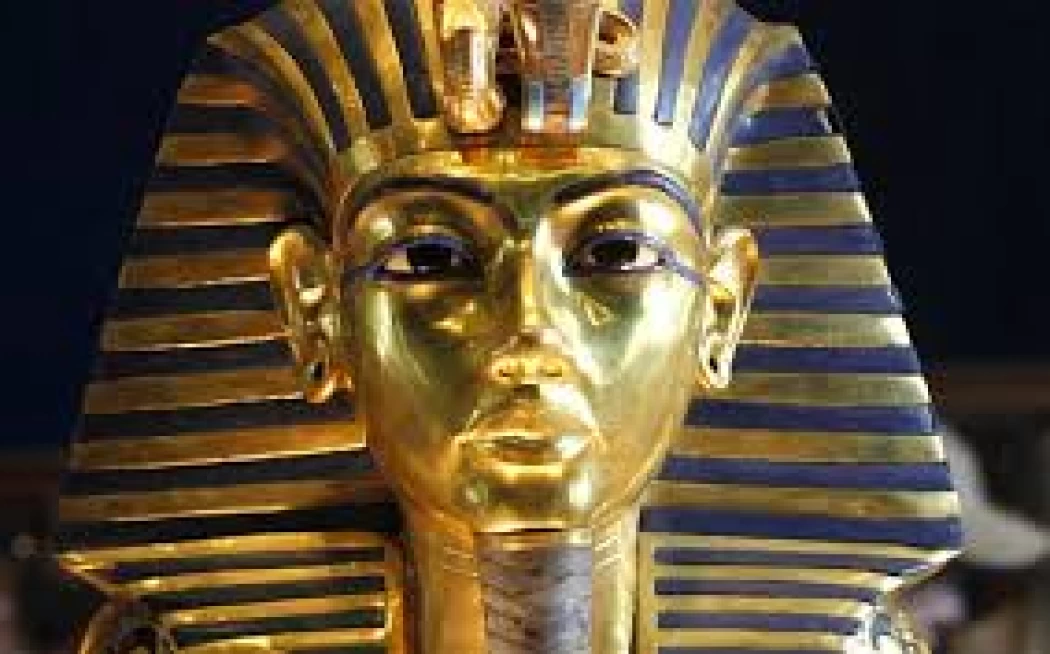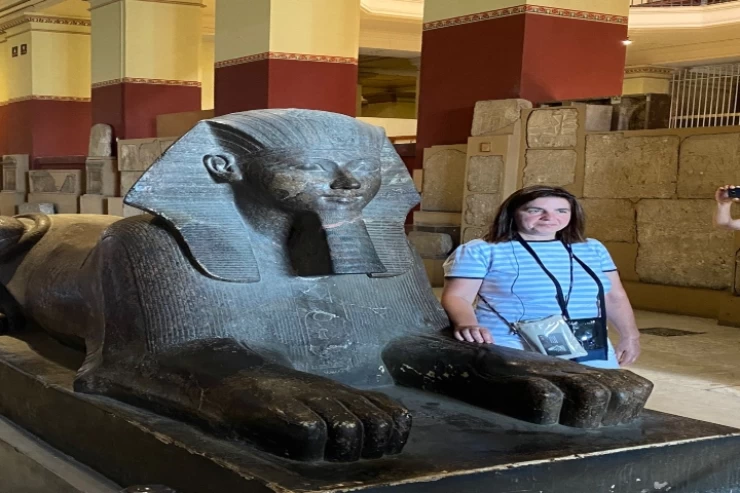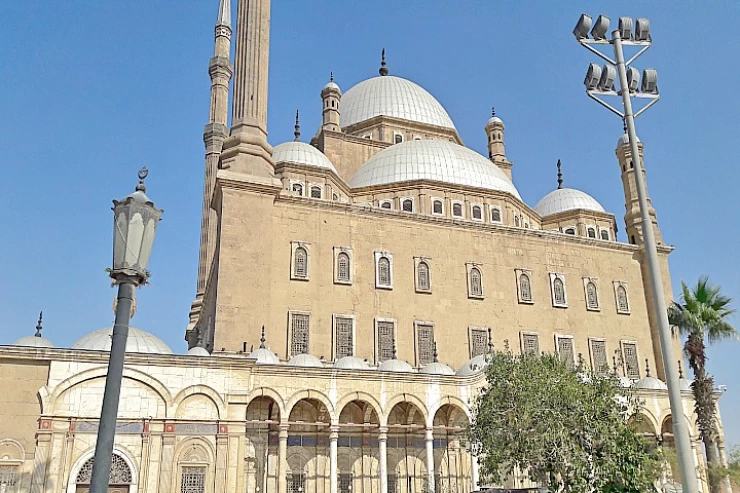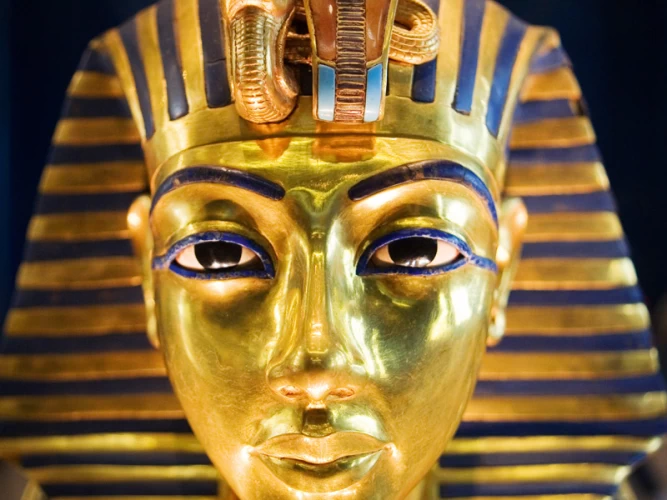
图坦卡门 | 埃及黄金国王
图坦卡蒙国王
埃及的黄金国王:托马斯:在公元前1341年-公元前1323年他父亲叛乱阿肯那顿期间继承了阿蒙邪教的埃及国王。 他是第18王朝的第十二位统治者,他的着名之处在于,除了他的黄金收藏品完好无损,现在在开罗的埃及博物馆展出外,他还回到了传统的阿蒙崇拜的宗教作为国王,在埃及确实值得繁荣。 埃及已经把这次访问作为埃及博物馆之旅的传统部分,我们从开罗出发的各种旅行。
图坦卡蒙出生于公元前1341年的阿马尔纳,是历史学家最喜欢的记忆之一,被设定为"儿童法老"。 他是法老阿肯那顿的继任者,也是新王国第18王朝的第十二位统治者。 他最初的名字,阿顿的持久形象,指的是对阿顿的崇拜,古埃及的太阳神。 阿顿是pharoah Akhenaten非常强烈地崇拜的东西,他命令我们崇拜这位独一的神,而不是来自古埃及的许多神。
如果他没有幸运地和平地死去,他的统治将持续很短的时间,但他也许是有史以来统治古埃及最着名的法老之一。 九岁之内,他上台。 最有可能的是,在古埃及的史册中,图坦卡蒙国王是最着名的个人。
黄金法老
图坦卡蒙的统治非常短暂:他从小生病,在公元前1323年去世,直到20岁,没有留下埃及王位的继承人。 虽然他统治,正如古代历史学家Manetho报道的那样,只有9年,我们记得这位法老的统治,因为他娶了同父异母的妹妹Ankhesenamon,他也强迫她改变她的原名,这是Ankhesenpaaton。 他还把埃及的首都从阿玛那带回来,阿玛那是阿肯那顿在底比斯建造的城市,现在是卢克索。
他的坟墓是在1922年由英国考古学家和埃及学家霍华德*卡特(霍华德-卡特)执导的探险中发现的,并由Carnarvon赞助。
在国王谷进行了五年的挖掘之后,卡纳冯正要放弃对法老墓的搜索,但卡特说服他为更多的挖掘提供资金。
在这项新投资开始后的22天,卡特在通往坟墓的通道上打开了一条裂缝。 法老的木乃伊,完全包裹并包含在最里面的石棺中,上面复盖着珠宝和护身符。 图坦卡蒙的脸上复盖着一个非常珍贵的葬礼面具,现在是博物馆的葬礼收藏品之一。
年轻的国王的死亡可能是突然发生的,因此还没有为他建立一个真正的坟墓。 根据一些考古学家的说法,这些情况促使家人准备将他埋葬在Nefertiti墓中,正如一些理论所认为的那样,他在七年前去世,并用隐藏的门封住两座坟墓之间的通
在埃及,即使一位国王意外死亡,也有70天的时间来填补注定给他的坟墓,根据传统,这些物品在来世可能对他有用。 在完成木乃伊制作过程之前,需要70天的时间。
他的木乃伊在我们在El-Dier El-Bahari cachette发现的木乃伊中找不到;它被埋在国王谷的一个非常小的坟墓中,与山谷中的皇家陵墓或他的祖先在吉萨建造的着名
埃及法老的木乃伊和坟墓据说被一个古老的诅咒所困扰,该诅咒指出,任何敢于扰乱这些防腐的凡人遗体的宁静的人都会患上疾病,死亡或两者兼而有之。 卡纳冯勋爵在坟墓被发现后不久就被发现死了.
围绕他死亡的谜团
据学者介绍,年轻的图坦卡蒙国王在十八岁时去世,几个世纪以来,人们对他死因的猜测一直在肆虐。 几个假说的范围从一些严重感染造成的死亡,由于他的腿部骨折,疟疾,甚至遗传异常,因为王室内的乱伦。 虽然现代科学通过CT扫描和DNA分析为这些理论带来了一些证据,但围绕他死亡的确切条件仍然笼罩在神秘之中。
遗产和文化影响
图坦卡蒙在所有技术意义上说,可能是军事或政治荣耀方面最不重要的统治者之一。 然而,与其他许多人相比,一座微不足道的坟墓使他成为有史以来最着名的法老之一。 他的宝藏四处奔走,吸引了数百万人,展示了古埃及文明的丰富性。 图坦卡蒙的故事继续被研究人员和爱好者普遍讲述,从而确保了他作为"埃及金王"的声誉。"
The Golden King of Egypt: Thomas: An Egyptian king who succeeded the cults of Amun during the time of his father's rebellion of Akhenaten in 1341 BC-1323 BC. He was the twelfth ruler of the 18th dynasty and is famous because, apart from his golden collection found intact and now exhibited in the Egyptian Museum in Cairo, he has indeed worthily prospered in Egypt by returning back to the traditional religion of the cult of Amun as a king. Egypt has made that visit a traditional part of the Egyptian Museum tour of our various tours from Cairo.
Tutankhamun, born in Amarna in 1341 B.C., is one of the historians' favorite memories set as the 'child pharaoh.' He was the successor of pharaoh Akhenaten and the twelfth ruler of the 18th dynasty of the New Kingdom. His original name, Lasting Image of Aton, referred to the cult of Aton, the solar deity of ancient Egypt. Aton was something adored rather forcefully by pharoah Akhenaten, who commanded us to worship this one god instead of the many deities from ancient Egypt.
After five years of excavation in the Valley of the Kings, Carnarvon was about to abandon the search for the pharaoh's tomb, but Carter convinced him to finance even more excavations.
22 days after the start of this new investment, Carter opened a crack in the access road to the grave. The mummy of the pharaoh, totally wrapped and contained inside the innermost sarcophagus, was covered with jewels and amulets. Tutankhamun's face was covered with a very precious funeral mask, which is now among the funeral collection in the museum.
His mummy was not found amongst those mummies we found in the El-Dier El-Bahari cachette; it was buried in a very small tomb in the Valley of the Kings, not compared to the royal tombs in the valley or famous monuments built by his ancestors in Giza and visited every year by millions during the tour to the Giza Pyramids.
The mummies and tombs of the Egyptian pharaohs are said to be haunted by an old curse that states that anyone who dares to disturb the tranquility of these embalmed mortal remains will suffer from illness, death, or both. Lord Carnarvon was discovered dead not long after the tomb's discovery.
According to scholars, the young king Tutankhamun died at the tender age of eighteen, and speculation over the cause of his death has raged on for centuries. Several hypotheses range from death caused by some severe infection due to a fracture on his leg, malaria, to even genetic abnormalities because of incest within the royal family. Although modern science by way of CT scans and DNA analyses has brought some evidence to these theories, the exact conditions surrounding his death are still shrouded in mystery.


















